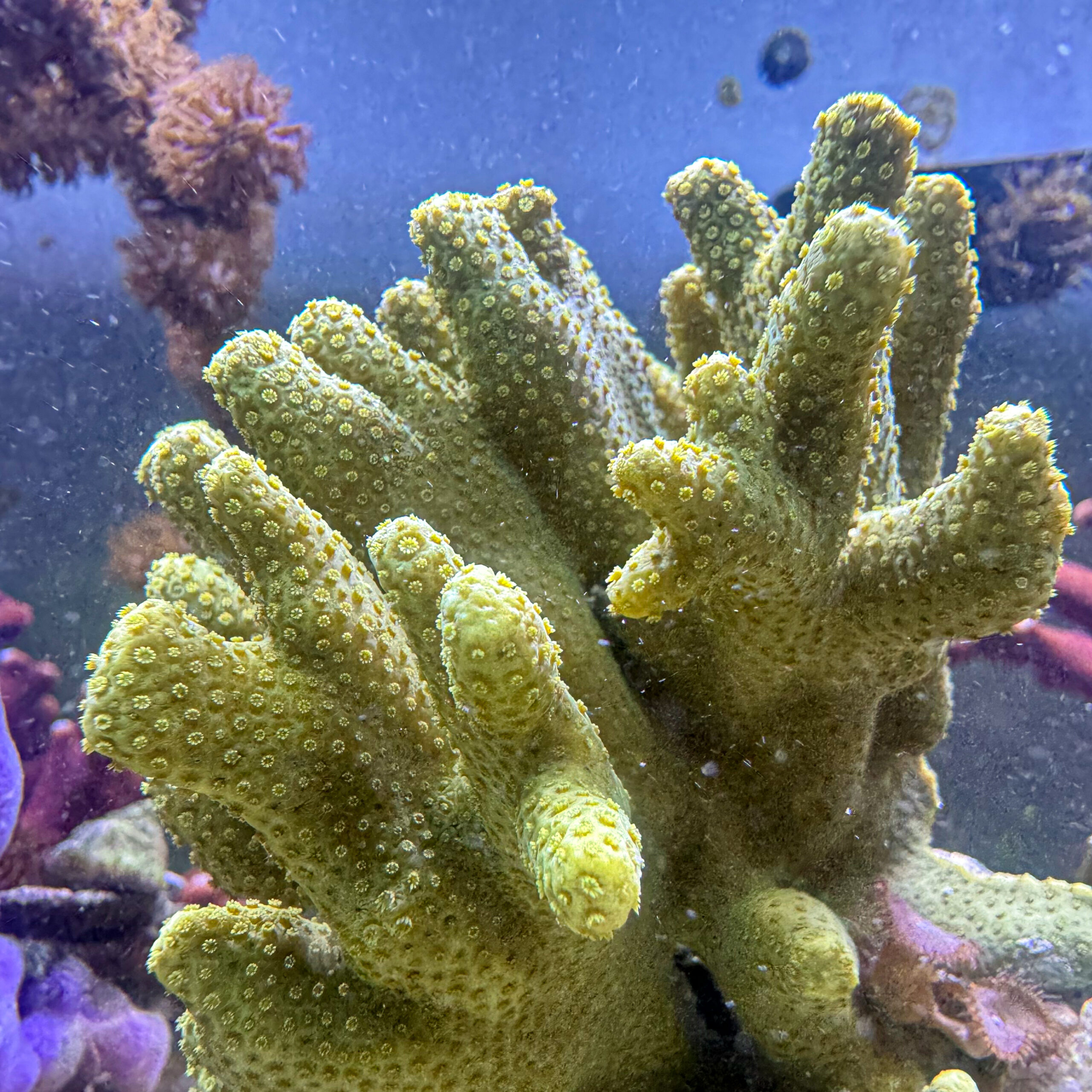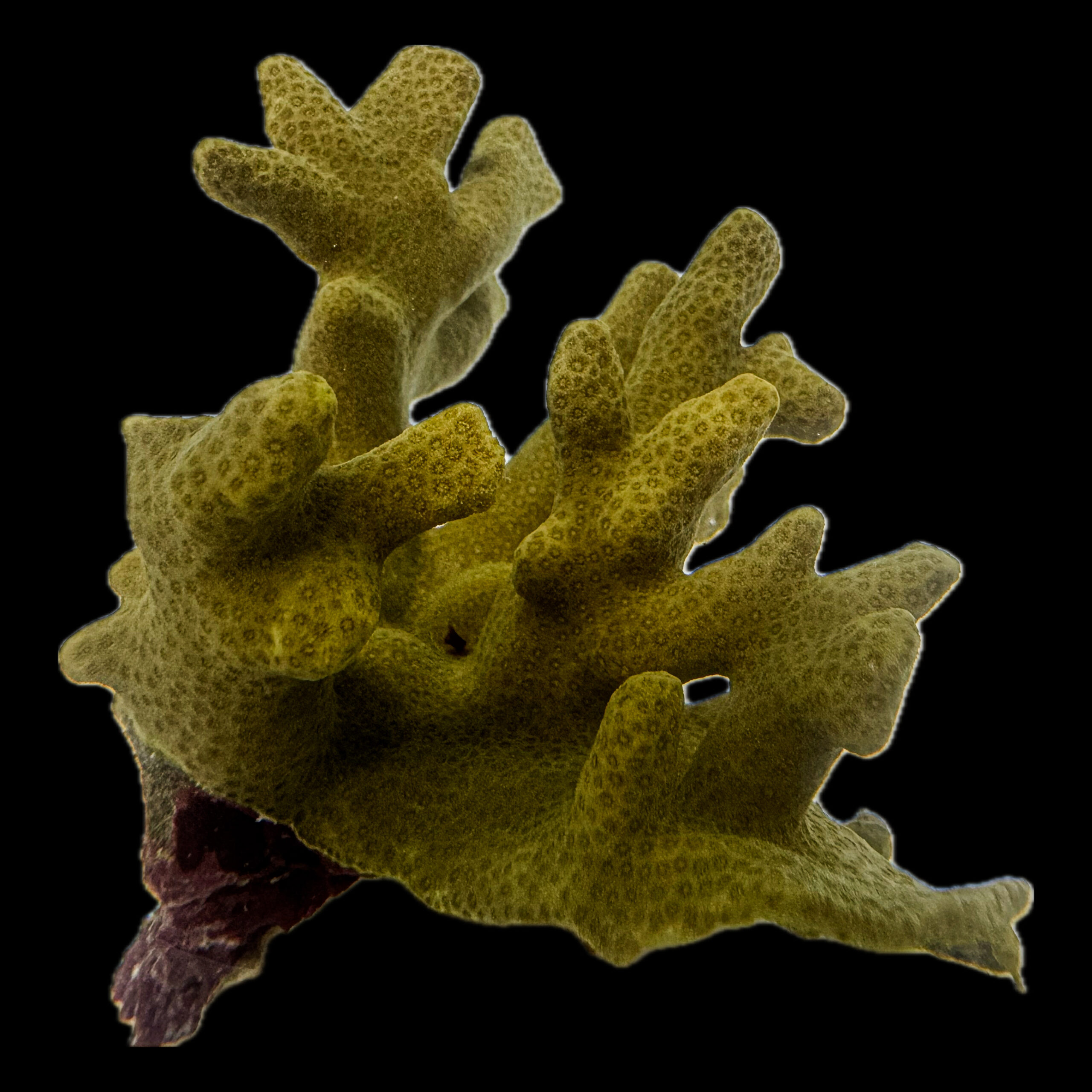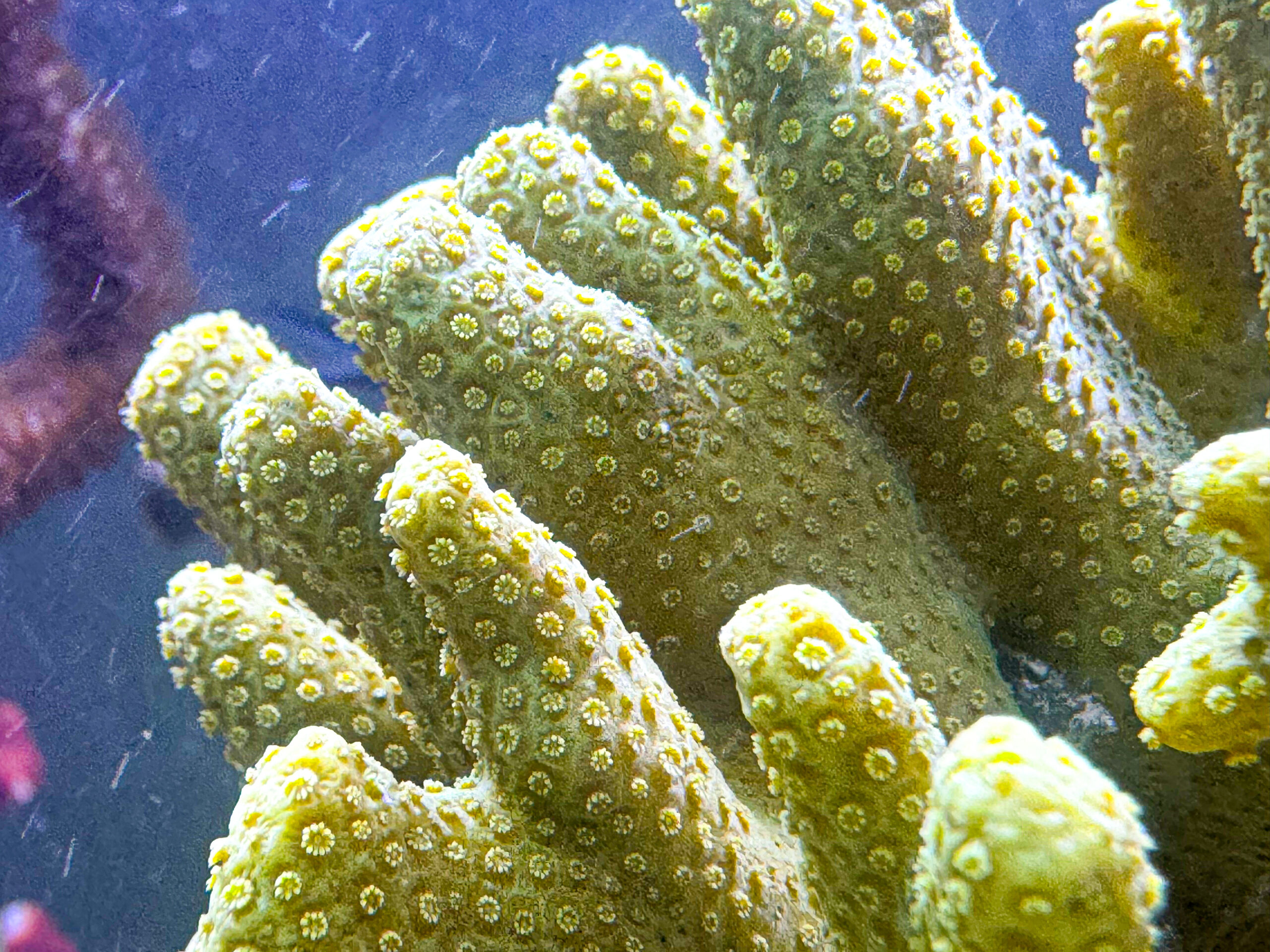With Fiji recently reopening exports, I dove into what corals used to be exported from that area. As I looked, one specific coral caught my eye right away, the classic Yellow Porites. I have always personally enjoyed viewing the Mustard Hill coral off the coast of south Florida which is also known as Porites astreoides. Obviously, since this is a Florida stony coral, it cannot be harvested for the aquarium trade. Therefore, when we received our first order at my place of work from Fiji, I made sure that there were a few colonies of yellow Porites that made their way into that order since I figured this would be as close to a Caribbean yellow Porites as one could possibly find.
As soon as I laid eyes on them, I snatched up a colony and brought it home. In my daylight spectral Caribbean tank, it looks absolutely stunning. After I saw them in that tank, I decided I had to get a second colony for the tank as I was so excited about this beautiful coral. Often, many reef tanks and actinic or blue spectrum tanks may overlook this coral completely. However, over time I have noticed that in the evening when my lights dim and turn “blue,” the yellow Porites fluorescence seems to turn to a beautiful neon green color! Over time, this fluorescence has continued to increase. So, for the typical blue reef tank hobbyist, this may still be a unique coral to change things up in your reef aquarium!

Let’s dive a little deeper into this specific coral and its requirements: First things first, we will go over some lighting. These specific yellow Porites are typically found in the shallow waters around Fiji and other islands in the Indo-Pacific. Many believe that this species needs a metal halide to keep its “yellow” color. However, I have found that not to be true. I have had each of my colonies for a few months now and have not noticed any color change whatsoever in either colony. They are under LED box lights from ViparSpectra, and the intensity is only set at fifty percent. They retain their beautiful yellow color just fine even with the LED lights on them.
Next up on the agenda is flow. These corals specifically can handle a decent amount of flow as usually they are found in shallow water that is rapidly moving. Placing a specimen in moderate to high flow would be ideal for this specimen to live and thrive in the home aquarium. However, I would be careful not to place the specimen in the direct path of a wavemaker. I would also recommend having an indirect flow to the point where you are able to see the polyps whip back and forth with the flow when they are extended. These conditions give your specimen the best chance of flourishing in your tank.

If you are thinking, ‘Okay, but how hardy are they?’ I am happy to report that these specimens specifically have been some of the hardiest stony corals I have ever kept in my life. From accidentally topping off the system with the wrong water to even having a major snail spawning fest in my tank, these corals have been thriving right through those incidents. Furthermore, I have also started to notice growth and have also fragged them once or twice already. So, with that said, they are fairly hardy, and keeping your calcium and alkalinity on point can help provide these beautiful corals with optimal growth and longevity in your aquarium.
In the past few years especially, Porites corals have always been close to my heart, especially since I had the opportunity to view some species off the coast of South Florida. These corals have also seemed to be quite a hardy group of corals in the sps realm if you’re looking to start creeping into the world of sps. Over the past few years, I have been working to collect as many different types of Indo-Pacific Porites as I can, and was so excited when I found out Walt Smith had these beauties available for the trade again. Tonga exports yellow Porites as well, but in my opinion, nothing beats the true classic Fiji Yellow Porites that this hobby is lucky to have back in the trade! If you’re looking for my advice, go out and get one for yourself!



